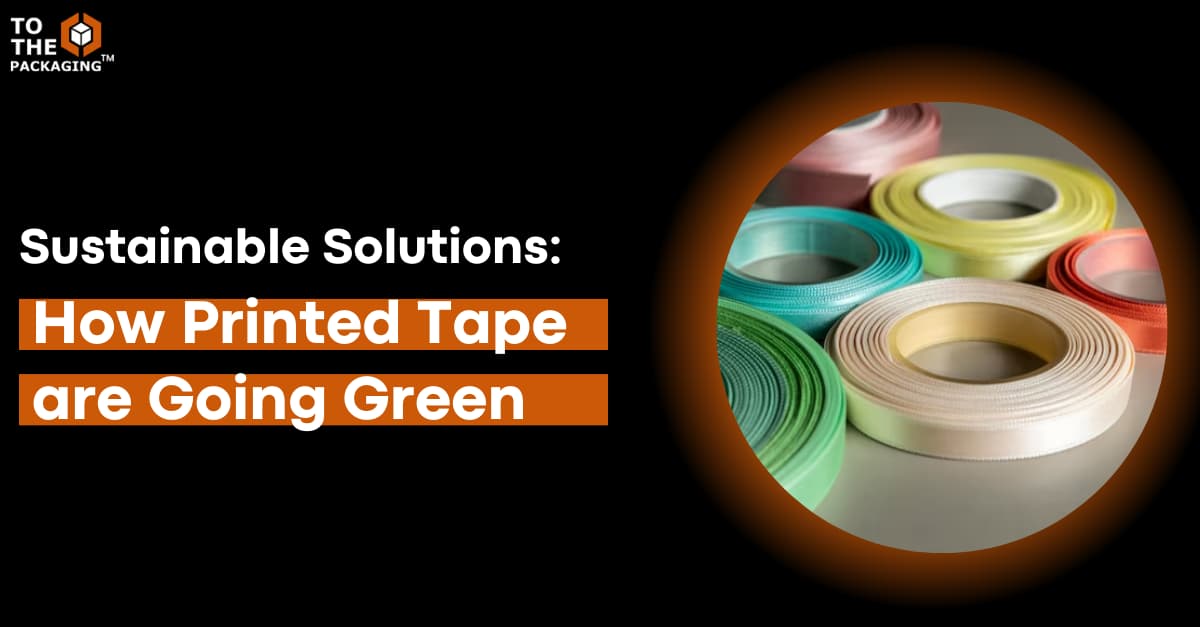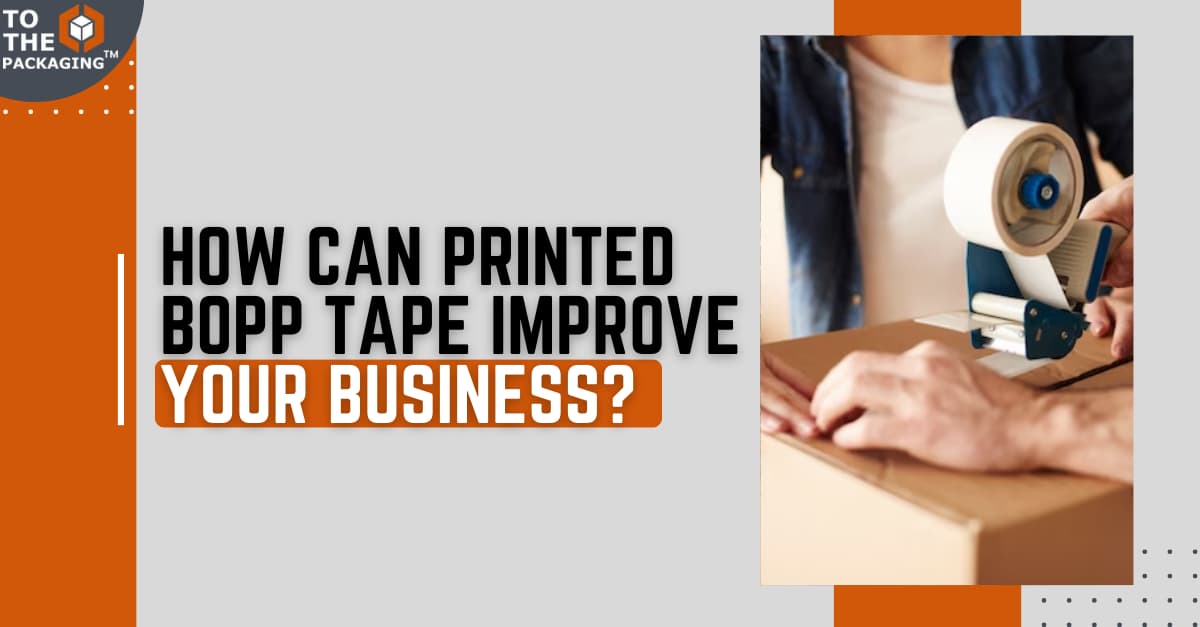Sustainable Solutions: How Printed Tape Manufacturers are Going Green

There is a growing awareness of sustainability. That is why, more and more businesses opt for eco-friendly products and practices. Printed tape manufacturers are no exception to this. They are trying to reduce their carbon footprint by shifting towards sustainability. How do they contribute to a sustainable future? What are the innovative ways they follow? Let’s find out.
1. Bio-degradable materials
Generally, tapes are made from non-biodegradable materials like polyethylene. Today, printed tape manufacturers are going for eco-friendly alternatives. There are several bio-degradable materials used for making tapes. These materials break down and decompose easily. What are they?
- Kraft tape
It is called kraft tape because it is made from kraft paper. Kraft paper is produced from the pulp of pine wood. Hence they are strong and durable and make a good choice as packaging tapes. Their color is typically brown. So, they are also called brown tape. They are often coated with pressure-sensitive adhesive. They are resistant to tears. Kraft tapes are commonly used for sealing and securing cardboard boxes, especially, where strong and reliable tapes are needed for safe shipping and secure packaging. These tapes can be customized. You can print your logos and other branding messages on them. They are a popular eco-friendly solution because they can be recycled along with cardboard boxes.
- Paper tape
Kraft tape is one type of paper tape but there are many other paper tapes. They are made using paper and other biodegradable materials. They decompose easily. Paper tapes may be made from fibers or recycled paper. Types of paper types include
- Washi tape - A decorative tape made from natural fibers like bamboo and kemp.
- Masking tape - It has a paper backing and is commonly used in painting applications.
- Gummed tape - You can activate this type of tape using water. It is often used in applications with strong and tamper-evident tape.
- PLA tape
PLA tape refers to tapes made from polylactic acid, a biodegradable and bioactive thermoplastic derived from renewable resources like sugarcane. This makes it a more sustainable option. They are versatile and printable. However, they are slightly more expensive than other tapes.
- Cellulose tape
This type of tape is manufactured from cellulose fibers. It is coated with a solvent-based natural rubber adhesive making it more sustainable. Cellulose tapes are versatile and suitable for a wide range of applications including packing, sealing, and splicing. They are certified for food packaging. They are resistant to temperature changes and moisture exposure. You can use them easily because they are hand-tearable.
2. Eco-friendly adhesives
Common adhesives used to promote sustainability are:
- Water-based adhesive
These adhesives use water as a carrier instead of VOCs or volatile organic compounds. So, they are safer for the environment.
- Natural rubber adhesive
Natural rubber is derived from the sap of rubber trees with adhesive properties.
- Starch adhesive
This type of adhesive is derived from vegetable starches. It is used for packing corrugated boxes.
- Plant-based adhesive
It is derived from plant sources like soy and other vegetable oils. They are generally used along with biodegradable backing materials to make them fully eco-friendly.
3. Eco-friendly inks
Printed tapes are becoming popular these days because they help businesses to stand out. Using eco-friendly inks for printing is one of the ways of going green. Most businesses use petroleum-based inks because it dries up quickly and is cheaper. However, petroleum is a non-renewable resource and it is not easy to extract it. Moreover, it is not possible to recycle tapes and paper with petroleum-based inks. Luckily, you have a greener alternative in the form of eco-friendly inks. Three types of eco-friendly inks do not cause any harm to the planet. What are they?
- Soy-based ink
Soybean oil is extracted from the soy seeds. Then, environment-friendly waxes and resins are added to make soy-based ink. As there are no chemical residues it is earth-friendly. Moreover, when you use soy-based inks for printing, the colors are attractive and vibrant.
- UV ink
It is a type of ink that dries swiftly when exposed to UV rays. Traditional inks become dry through evaporation. On the other hand, UV ink dries up through a process called curing. They are environment-friendly because of the reduced VOC emissions when compared to other inks. Moreover, it helps in energy-saving because of its quick drying through the curing process.
- Water-based ink
This type of ink is processed from solvents, organic pigments, water-soluble resins, etc. It is not harmful to the environment because it does not produce any volatile compounds. It is versatile and is used in various types of printing including flexography, gravure printing, screen printing, etc.
4. Manufacturing process
Printed tape manufacturers are investing in energy-saving techniques and practices to reduce the resultant carbon footprint. For example, they use renewable energy sources like solar and wind power to run their manufacturing units. Moreover, manufacturers have realized that using renewable resources is cost-saving in the long run.
5. Waste reduction
Reducing waste is one of the key elements to increase sustainability. They are implementing new techniques that reduce production waste. Manufacturers are also promoting recycling to decrease waste to decrease their contribution to landfills. They follow a few strategies to ensure waste reduction.
- Continuous monitoring to identify and eliminate inefficiencies and wastage in the manufacturing process.
- Optimization of cutting and slitting processes to decrease material waste.
- Applying adhesives and coatings precisely to reduce wastage.
- Adopting a Just-in-Time inventory system to avoid overstocking
- Segregating waste at the source to facilitate recycling
- Using recycled materials for the production of tapes
- Implementing recycling programs
- Conducting training programs for the employees about the importance of waste reduction and educating them on waste-reducing strategies
- Complying with government regulations related to waste disposal.
Conclusion
By following a combination of the above-mentioned strategies, printed tape manufacturers are going green. Businesses that prioritize environmental friendliness win the hearts of their customers. They gain an edge in the competitive market. Adopting eco-friendly practices is not only good for the earth but also for businesses because people are eco-conscious these days.

To The Packaging, is a firm with more than 20 years of experience in the packaging business. We believe in creating innovative solutions for all kinds of packaging problems for big and small businesses.





